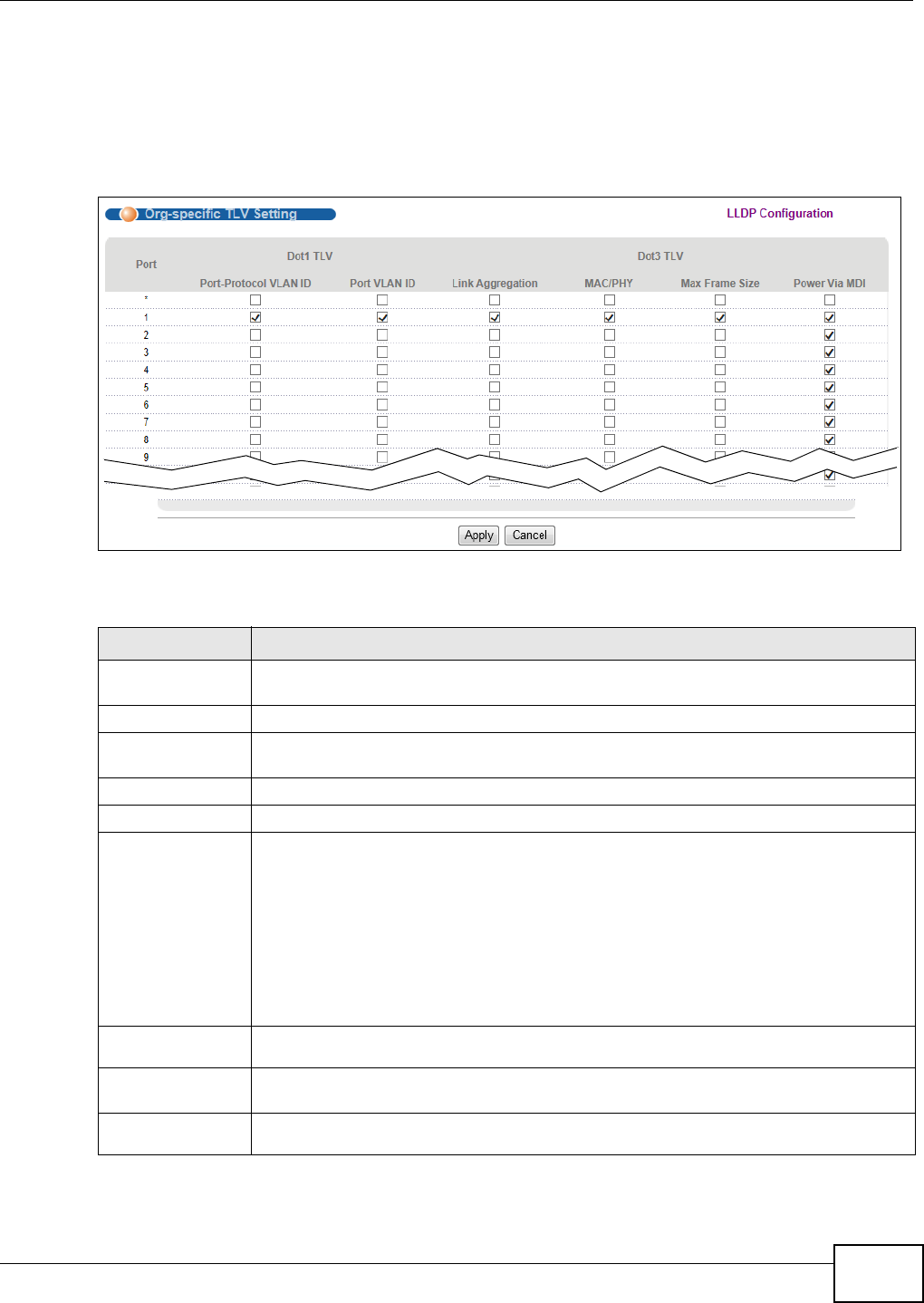
Chapter 31 Link Layer Discovery Protocol (LLDP)
GS1920 Series User’s Guide
253
31.6.2 LLDP Configuraion Basic Org-specific TLV Setting
Use this screen to configure organization-specific TLV settings. Click Advanced Application >
LLDP > LLDP Configuration (Click Here) > Org-specific TLV Setting to display the screen as
shown next.
Figure 182 Advanced Application > LLDP > LLDP Configuration> Org-specific TLV Setting
The following table describes the labels in this screen.
Table 117 Advanced Application > LLDP > LLDP Configuration > Org-specific TLV Setting
LABEL DESCRIPTION
Port This displays the port number on which you’re configuring LLDP . Select * to configure
all ports simultaenously.
Dot1 TLV
Port-Protocol
VLAN ID
Select to enable the sending of IEEE 802.1 Port and Protocol VLAN ID TLVs on the
port(s).
Port VLAN ID Select to enable the sending of IEEE 802.1 Port VLAN ID TLVs on the port(s).
Dot3 TLV
Power Via MDI
TLV
Note: For PoE models only. The Power Via MDI TLV allows network management to
advertise and discover the MDI power support capabilities of the sending port on the
remote device.
•Port Class
• MDI Supported
•MDI Enabled
• Pair Controlable
• PSE Power Pairs
•Power Class
Link
Aggregation
Select to enable the sending of IEEE 802.3 Link Aggregation TLVs on the port(s).
MAC/PHY Select to enable the sending of IEEE 802.3 MAC/PHY Configuration/Status TLVs on the
port(s).
Max Frame
Size
Select to enable the sending of IEEE 802.3 Max Frame Size TLVs on the port(s).
